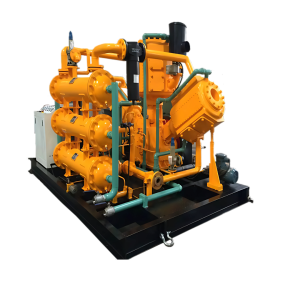When you design or maintain a piston compressor, you must pay close attention to one critical component: the piston itself. Even though the housing, valves, and rings matter, the piston determines long-term reliability, operating efficiency, and maintenance cost. Therefore, this article explores how pistons work, where they are used, the common piston materials, and—most importantly—the selection criteria you should apply before you place an order.
1. How Does a Piston Function Inside a Compressor?
First of all, a piston converts rotational energy from the crankshaft into linear motion inside the cylinder. As it travels upward, it compresses the gas; as it moves downward, it draws fresh gas into the chamber. Because the piston slides against the cylinder wall, material choice directly influences wear, friction, heat dissipation, and overall service life.
2. Key Applications of Pistons in Modern Compressors
-
Oil-lubricated reciprocating compressors for general industrial air
-
Oil-free reciprocating compressors for food, pharma, and electronics
-
Diaphragm compressor drives (the piston pressurizes hydraulic oil rather than process gas)
-
Gas boosters for hydrogen, nitrogen, or natural-gas refueling
-
High-pressure PET bottle blowing compressors in packaging lines
Across all these scenarios, engineers focus on low friction, dimensional stability, and high fatigue strength.
3. Common Piston Materials (Pros and Cons)
| Material | Typical Use Case | Advantages | Limitations |
|---|---|---|---|
| Gray Cast Iron (HT200/HT250) | Standard oil-lubricated compressors | Low cost, good machinability | Brittle, limited to ~200 °C |
| Ductile Cast Iron (QT450-10) | Medium-pressure air and gas | Better toughness than gray iron | Heavier than aluminum alloys |
| Aluminum Alloy (e.g., 2618, 4032) | Oil-free and high-speed compressors | Light weight, excellent heat transfer | Softer, needs hard anodizing or coatings |
| Steel Forgings (Cr-Mo steel) | High-pressure CNG / H₂ boosters | High tensile strength, long fatigue life | Heavier, costlier, needs surface treatments |
| Composite Pistons (Al core + Ni-SiC coating) | Oil-free, high-speed medical air | Ultra-low friction, corrosion resistance | Higher cost, complex manufacturing |
| Piston with PTFE-filled rings | Food-grade and pharmaceutical air | Virtually zero oil migration | Limited to ~250 °C, ring creep under load |
4. Material Selection Standards and Guidelines
-
Operating Pressure & Temperature
-
Up to 25 bar and 150 °C → Cast iron remains viable.
-
25–100 bar or 200 °C+ → Choose forged steel or Al alloy with surface treatment.
-
-
Lubrication Regime
-
Oil-lubricated: gray or ductile iron suffices.
-
Oil-free: aluminum alloy or composite pistons reduce friction.
-
-
Gas Properties
-
Dry, inert gases (N₂, Ar): aluminum works well.
-
Reactive or dirty gases (H₂S, CO₂): pick stainless or coated steel to resist corrosion.
-
Hydrogen service: forged Cr-Mo steel plus nickel plating to prevent hydrogen embrittlement.
-
-
Speed and Load Cycles
-
Below 600 rpm: cast materials are adequate.
-
600–1200 rpm: lighter aluminum reduces inertial forces.
-
1200 rpm or continuous duty: composite pistons with advanced coatings excel.
-
-
Industry Standards
-
Refer to API 618 for process-gas compressors.
-
Follow ISO 13707 for reciprocating compressor design.
-
5. Practical Tips for Engineers and Buyers
-
Always request metallurgy certificates from suppliers; without them, warranty claims get complicated.
-
Match piston rings to piston material—e.g., PTFE-filled rings run best on hard-anodized aluminum pistons.
-
Because thermal expansion differs, verify clearance at the highest operating temperature.
-
Lastly, run a finite-element fatigue analysis if you plan to exceed 250 bar discharge pressure.
Choose Smart, Run Longer
Selecting the proper piston material is not just a matter of price. Rather, it directly determines uptime, energy efficiency, and safety. By understanding how pistons work, where they are used, and which materials suit specific pressures, temperatures, and gases, you can specify a piston that minimizes wear yet maximizes return on investment.
If you are still unsure which piston material fits your compressor, feel free to consult our engineering team. We routinely help clients balance cost, durability, and performance—ensuring their compressors run smoothly for years to come.











